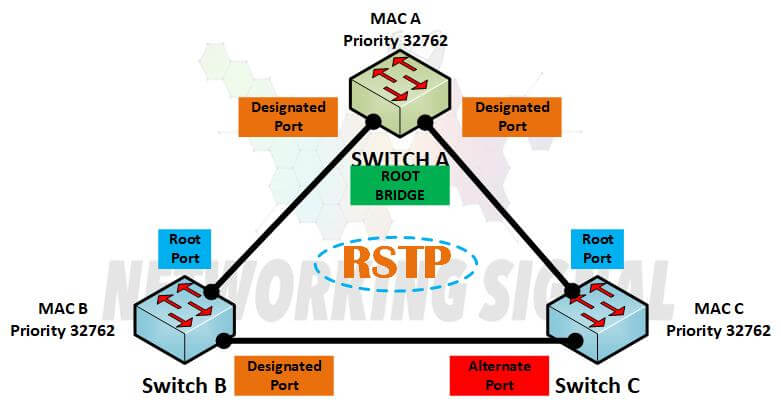RSTP is a very efficient STP implementation that works by exchanging information between switches in order to determine the best path for data traffic. RSTP uses a special purpose signaling protocol called Rapid Spanning Tree Protocol (RSTP) to achieve rapid failover in the case of link failure. RSTP was introduced in 802.
How RSTP Works
1. The switches exchange information about the state of their links with each other.
2. Based on this information, the switches calculate the best path for data traffic.
3. If a link fails, RSTP rapidly converges and recalculates the best path. This failover is much faster than traditional STP implementations.

There are 5 states in the RSTP path selection process:
1. Disabled state: In this state, the port is disabled and cannot be used for data traffic.
2. Blocking state: The port can receive BPDUs but cannot forward data traffic in this state. This state is used to prevent loops in the network.
3. Listening state: The port can receive and process BPDUs but cannot forward data traffic in this state. This state is used to prepare the port for forwarding data traffic.
4. Learning state: The port can learn MAC addresses but cannot forward data traffic in this state. This state is used to populate the MAC address table.
5. Forwarding state: The port can forward data traffic in this state. This is the normal operating state for a port.
RSTP Timers
There are 3 timers in RSTP:
1. Hello timer: This timer controls how often BPDUs are sent on a port. The default hello timer is 2 seconds.
2. Forward delay timer: This timer controls how long a port spends in the listening and learning states. The default forward delay is 15 seconds.
3. Max age timer: This timer controls how long a BPDU can be stored without being refreshed. The default max age is 20 seconds.

